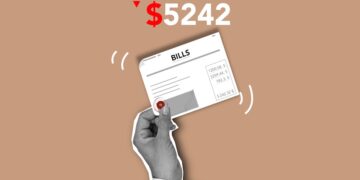Escape the Debt Trap: Strategies to End Reliance on Borrowed Money
For many, the journey through financial stability is fraught with the challenges of debt management. From mortgages and car loans to credit card debts and personal loans, borrowing money seems inevitable in today’s economy. However, what starts as a necessary aid can quickly turn into a debilitating trap, stifling financial freedom and growth. In this guide, we will explore effective strategies to help you minimize reliance on borrowed money, enhance your financial stability, and regain control of your economic life.
Understanding the Debt Trap
The term ‘debt trap’ refers to a situation where one is forced to take on new debt to repay existing debts, making it nearly impossible to break free without external help or significant financial adjustments. This cycle can be harmful to one’s credit score and overall financial health. Understanding how to navigate out of this cycle is crucial for long-term stability. Let’s explore several strategies to help achieve this.
1. Budgeting: Creating a Robust Financial Plan
Budgeting is foundational in managing and escaping debt. It involves tracking your income, expenses, and allocating funds to prioritize debt repayment. Tools like budgeting apps or spreadsheets can dramatically simplify this process. The key is to be realistic about your spending habits and disciplined in adhering to your budget. Reduce unnecessary expenses and allocate more funds toward reducing your debt faster.
2. Establishing an Emergency Fund
Unexpected expenses can push you deeper into debt. By building an emergency fund, you can cover such expenses without borrowing more money. Financial experts generally recommend setting aside three to six months’ worth of living expenses in a readily accessible savings account.
3. Debt Repayment Strategies
Choosing the right debt repayment strategy is crucial for escaping the debt trap. Two popular methods are:
- The Avalanche Method: Focus on paying off debts with the highest interest rates first while maintaining minimum payments on others. This method helps save money on interest charges in the long run.
- The Snowball Method: Pay off smaller debts first, gaining momentum and motivation as each debt is cleared before tackling larger ones.
Select a strategy that aligns with your financial habits and goals.
4. Consolidating Your Debts
Debt consolidation can be a viable strategy for those juggling multiple debts. This involves taking out a new loan to pay off various debts, leaving you with a single payment to manage. Often, the consolidation loan has a lower interest rate, making repayments more manageable and less costly over time.
5. Seeking Professional Help
If your debt feels overwhelming, it may be beneficial to consult with a debt counselor or financial advisor. These professionals can provide personalized advice and may help negotiate with creditors to lower your debt amounts or monthly payments.
6. Increasing Your Income
Boosting your income can accelerate your escape from debt. Consider options like asking for a raise, changing jobs for better pay, taking on freelance work, or starting a side business. Extra income can be directed towards paying down debt faster.
7. Leveraging Technology
Utilize technology to stay on top of your debt repayment. Financial planning apps can help you track your debts, budget, and savings in real-time, providing a clearer picture of your financial health and helping you make informed decisions.
8. Adopting a Minimalist Lifestyle
Reevaluate your spending habits and lifestyle choices. Embracing a minimalist lifestyle can help reduce the urge to spend on non-essential items, freeing up more resources to clear your debts. Ask yourself if each purchase is necessary and what impact it would have on your financial goals.
9. Education: Understanding Financial Products
Educate yourself about the terms, conditions, and fees associated with financial products before committing to any form of debt. Knowledge is power, specifically when it involves understanding compound interest, loan terms, and the risks associated with secured versus unsecured loans.
10. Staying Motivated and Committed
Finally, maintaining your motivation is crucial. Regularly review your progress and celebrate milestones, no matter how small. Staying focused on your ultimate goal of debt freedom can inspire continued effort and dedication.
Conclusion
Escaping the debt trap requires a combination of strategic planning, disciplined budgeting, and sometimes, a significant lifestyle shift. By implementing these strategies, you can reduce your reliance on borrowed money, improve your financial health, and move towards a more prosperous and stress-free financial future. Remember, the most crucial step is to begin. With determination and the right approach, you can navigate your way out of debt and into financial freedom.
Start today, and take control of your financial destiny!

























































